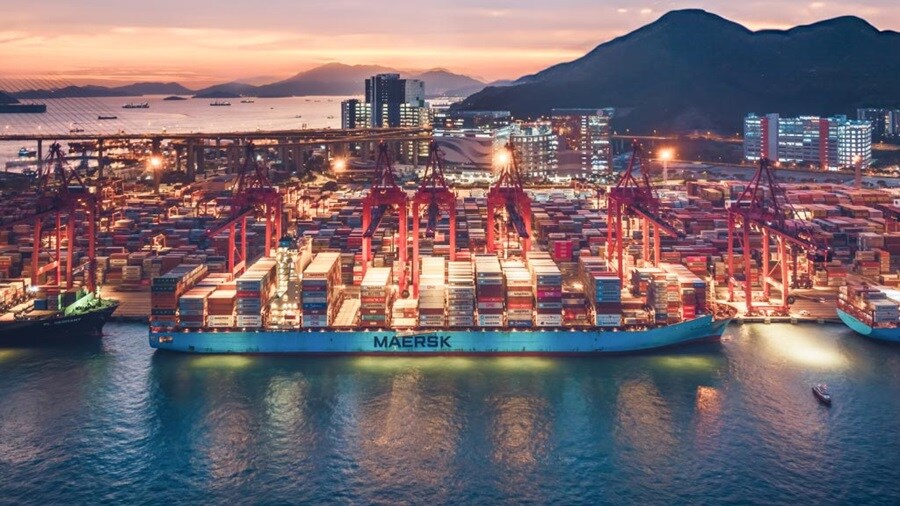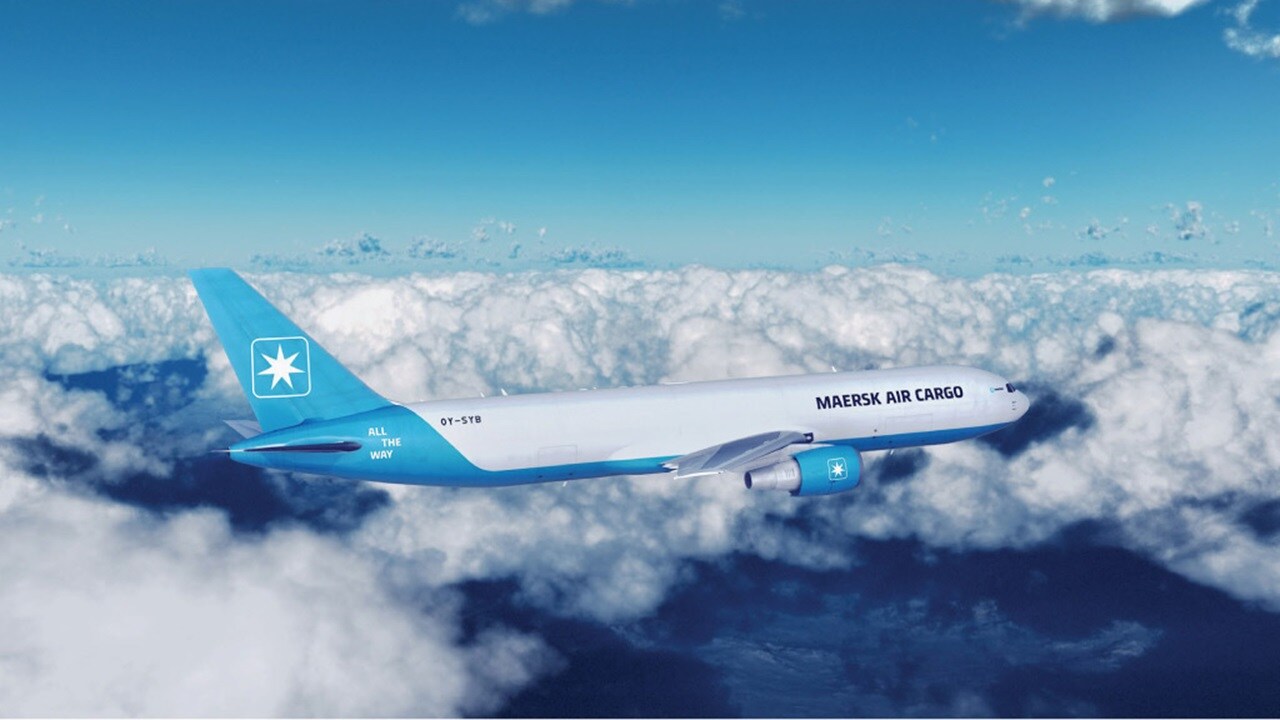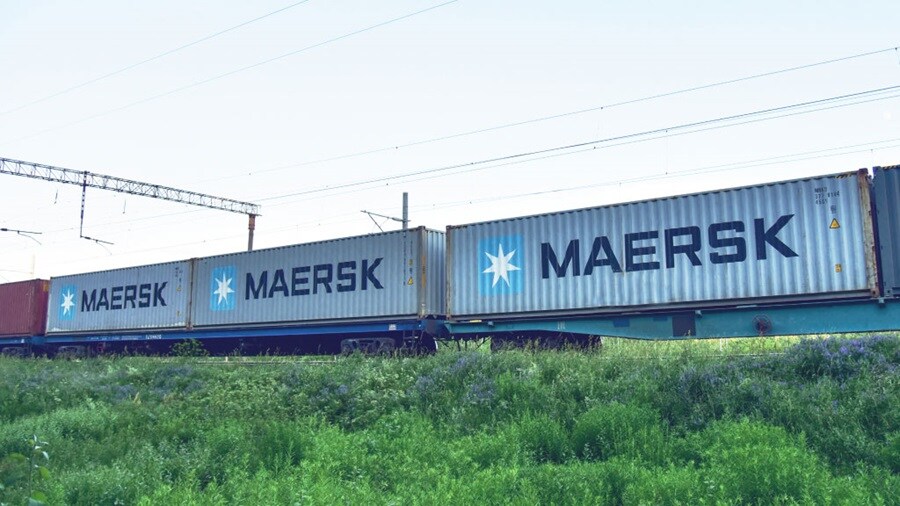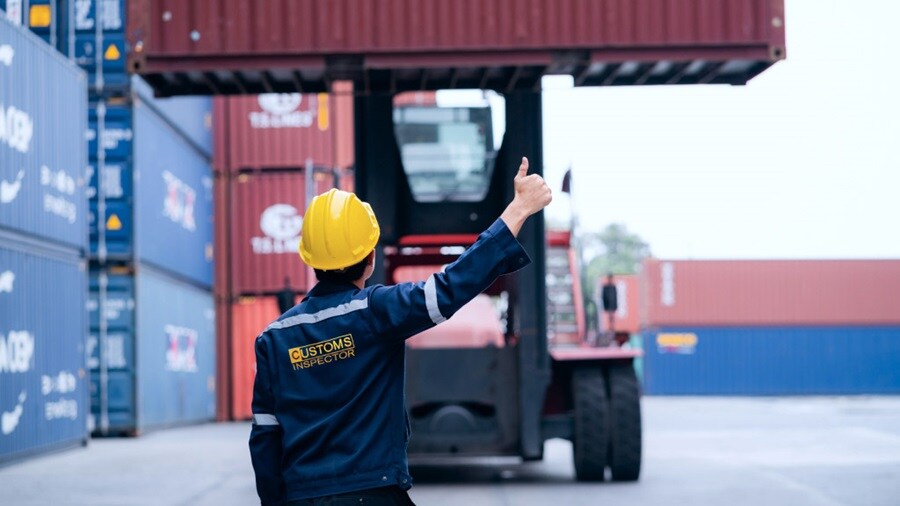The Asia-Pacific region remains a key driver of global trade, with strong demand across ocean, air, and inland logistics. The Maersk East-West network transition continues to progress, with 75% of the network now implemented and a schedule reliability of 94% recorded in February under the Gemini Cooperation. Meanwhile, shifting trade policies—including the ongoing U.S. Section 301 review and upcoming reciprocal tariffs—may impact supply chains, requiring businesses to stay agile. In air freight, Asia-North America demand remains robust, and regulatory changes could influence cross-border e-commerce flows. This update provides insights into these developments and highlights how Maersk is ensuring supply chain stability through integrated logistics solutions.
Download the flyer in Chinese language:
Ocean Market Update
Steady Growth in Global Container Trade & Fleet Expansion

According to the latest data from Alphaliner, global container trade remained resilient in the first quarter of 2025, driven by strong export demand from the Asia-Pacific region. For Maersk, the phase-in of the Gemini cooperation has progressed steadily, contributing to vessel utilisation and service reliability while supporting international supply chains.
As of February 2025, Alphaliner notes that global fleet size has expanded by 10% year-on-year, nearing record-high levels. However, vessel idling remains low, signalling strong utilisation across major trade routes.
Maersk is actively optimising capacity and vessel deployment to accommodate increasing demand while ensuring service reliability. Our network remains flexible, allowing us to respond to shifting trade patterns and volume fluctuations efficiently. With high utilisation across global trade lanes, we suggest that customers continue planning shipments in advance to secure space and ensure smooth logistics operations. Maersk recommends leveraging our digital tools for real-time tracking and capacity insights to enhance supply chain resilience.
The underlying market dynamics with strong demand and ongoing fleet expansion will likely continue to shape trade flows in the near term. Maersk’s regional teams are available to provide tailored solutions, and customers can access the latest updates via our online platforms for further support.
Current implementation of the Maersk East West network
It is the ambition of the Gemini cooperation and the Maersk East-West network (earlier referred to as the Network of the Future) to deliver a flexible and interconnected ocean network with historically unmatched and industry-leading reliability. We have set the ambitious target of aiming to deliver schedule reliability of above 90% (Sea-Intel) once the network is fully phased in, by end of May 2025.
As of now, 75% of the East-West network has been implemented. Implementation will continue until end of May 2025, as there as still some vessels running under the earlier 2M agreement. Currently, more than 250 of around 340 vessels in total have transitioned into Maersk and Hapag-Lloyd’s new ocean network which covers East-West trades.
The Asia Pacific network was fully phased in within the first month, ensuring seamless regional connectivity.
The first Sea-Intel numbers
On 25th March, Sea-Intelligence published its monthly schedule reliability figures, including data showing how sailings under the Gemini Cooperation performed in the first month of Maersk and Hapag-Lloyd’s new operational collaboration.
According to Sea-Intelligence’s data, the Gemini Cooperation delivered a schedule reliability of 94 percent in February.
Information on sailings
All import-export connections via our Tanjung Pelepas hub are running on schedule. For further information the East-West network, please visit our dedicated webpage. For more information about sailing schedules please visit our page on it.
United States Trade Act Update
The Office of the United States Trade Representative (USTR) is currently reviewing proposed actions under Section 301 related to China’s role in the maritime, logistics, and shipbuilding sectors. This investigation could lead to new trade measures which may impact shipping costs and supply chain dynamics for businesses relying on these services.
At Maersk we support efforts to ensure that global trade remains efficient and predictable. Accordingly, as one of the world’s leading ocean carriers, we have contributed to the World Shipping Council’s response to the proposal.
While the outcome of this review remains uncertain, we are closely monitoring developments, and we remain committed to keeping you informed and providing solutions tailored to your logistics needs.
Air Freight Update

The Asia Pacific air freight market continues to expand, driven by sustained demand across key trade lanes and evolving regulatory developments.
China’s economy accelerated sharply in Q4 2024, ending the year with 5% GDP growth, successfully meeting its growth target. However, other indicators suggest actual economic momentum may have been weaker, and consumer confidence remains low. Outbound market demand in the Asia Pacific region remains very strong, while capacity availability is also good. According to IATA, the Asia-North America corridor, the largest air cargo trade lane , recorded a 6.1% year-on-year (YoY) increase, marking 15 consecutive months of growth. This continued expansion is fuelled by strong electronics and e-commerce shipments, reinforcing the route’s resilience. The Europe-Asia trade lane also saw a 2.3% YoY rise in cargo volumes, extending nearly two years of steady growth. Despite geopolitical challenges, this corridor remains crucial for automotive, pharmaceutical, and high-value machinery shipments.
Regulatory uncertainty remains a factor in the market. In the United States, the planned termination of the de-minimis exemption for Chinese low-value packages was temporarily paused on February 7, 2025, due to customs backlogs. Authorities have delayed full implementation until operational systems are ready, creating uncertainty for e-commerce and logistics providers.
Maersk is closely tracking market trends and regulatory changes to help customers navigate shifting air freight conditions. Our integrated solutions ensure flexibility in routing and capacity management to minimise interruptions to supply chains. With ongoing growth in key trade lanes and regulatory adjustments on the horizon, customers should proactively monitor policy changes that may impact their shipments. Maersk advises businesses to engage with our teams for tailored logistics strategies and alternative transport solutions where necessary.
Asia-North America air freight demand is expected to remain strong, subject to downside risks from tariffs, US consumption and regulatory shifts that may introduce complexities for low-value shipments. Maersk will continue providing real-time insights and expert guidance to help businesses adapt. For the latest updates, customers can connect with our regional teams or visit our online platforms.
Inland Update
Inland Cargo Market Trends

Inland cargo in the Asia Pacific region is evolving, driven by infrastructure expansion, cross-border trade, and rising e-commerce demand. Investments in rail and road networks are enhancing efficiency and reducing costs, with the China-Europe rail trade lane and expanded expressways shortening transit times. Vietnam and Indonesia are modernizing road freight systems to support industrial growth, while logistics providers upgrade fleets to meet increasing e-commerce volumes.
Cross-border trade is gaining momentum, supported by new logistics hubs and Free Trade Agreements (FTAs), though border delays and customs complexities persist.
The surge in e-commerce is fuelling demand for faster last-mile delivery, prompting investments in regional warehouses, optimized fleets, and enhanced distribution networks.
Maersk is strengthening its inland logistics network with expanded rail, road, and warehousing solutions, including cross-border road and rail services, dedicated road transport, and last-mile delivery. Our integrated solutions, from digital tracking tools to sustainable logistics options, help businesses optimize efficiency and reduce costs.
With ongoing infrastructure improvements and regulatory shifts shaping inland cargo flows, Maersk remains committed to providing seamless, cost-effective logistics solutions. Customers can stay updated by connecting with our regional teams or visiting maersk.com.
eCommerce Update
Navigating Cross-Border eCommerce in 2025

Proposed changes to U.S. import tariff policies could increase pre-paid tariffs and customs clearance fees for B2B and B2C cross-border logistics. This may pose challenges for e-commerce marketplaces and brands exporting low- to medium-value goods, potentially impacting pricing strategies and competitiveness.
Despite these changes, the strong trade complementarity between China and the U.S., particularly in daily consumer goods, is expected to sustain cross-border e-commerce flows. However, businesses must navigate added complexity by diversifying product selections and delivery methods to remain competitive.
Maersk continues to support e-commerce businesses with comprehensive logistics solutions, including global shipping, air freight, e-commerce fulfilment warehouses, and cross-border parcel delivery. In February 2025, we partnered with Alibaba.com to integrate LCL and FCL services, providing cost-effective and transparent shipping for online sellers. We are also expanding e-commerce parcel delivery from China to Europe, China to U.S., Vietnam to the U.S, other Asia Pacific origins to the U.S and Europe to the U.S. to offer more origin options and reduce supply chain risks. with these solutions, Maersk enables customers to stay ahead in a dynamic market, ensuring efficient and cost-effective logistics despite evolving regulations.
Customs Update
Singapore Introduces Streamlined Transhipment Permit from 2025

Effective 1 January 2025, Singapore Customs and the Ministry of Trade and Industry will implement the Through Transhipment with Inter-Gateway Movement (TNP-TTI) permit to simplify customs procedures for goods moving through Singapore’s land checkpoints.
Replacing the need for separate import and export permits, the TNP-TTI will reduce administrative burdens and costs for shipments transiting through Woodlands and Tuas before export via air or sea. Malaysian importers can now use a single transhipment permit and waybill for the entire journey, eliminating the need for fiscal representation in Singapore. This also benefits overseas sellers shipping to Malaysia by way of transhipment in Singapore, ensuring a more seamless and cost-effective supply chain.
These changes strengthen Singapore’s role as a key transhipment hub, improving efficiency, reducing compliance requirements, and lowering logistics costs for businesses.
Upcoming Reciprocal Tariffs on April 2, 2025
As you may be aware, the U.S. government intends to implement new reciprocal tariffs starting April 2, 2025. The affected goods could span key industries such as automotive, electronics, agriculture, and consumer products. If you import from the impacted regions, these changes could affect costs, supply chain planning, and compliance requirements. Understanding these adjustments now will help you prepare for potential disruptions and cost increases.
Reciprocal tariffs and calculations:
The tariffs are slated to apply to goods imported from countries and regions such as China, India, Mexico, Germany, Brazil, South Korea, Japan, France, Canada, Italy, Taiwan region, the United Kingdom, Thailand, Vietnam, and Singapore.
The U.S. Treasury Secretary has stated that each impacted country will be assigned a single tariff rate based on its trade practices. This rate will account for not only existing tariff levels but also non-tariff barriers such as taxes, currency policies, and labor standards. The exact rates have not been fully disclosed, but they will play a key role in determining the duties imposed on imports from these countries. Businesses should monitor updates closely to understand how these tariffs will affect their specific goods.
We will continue to monitor the situation and provide updates as more details emerge. For the latest tariff-related updates, you can find all relevant information here.
Our team is available to help you assess the impact of these changes and explore strategies to manage costs, including tariff classification reviews, trade agreement utilization, and alternative sourcing or routing options. For assistance regarding US regulations, please contact us at: GTCCAPA@maersk.com.
Major Ports Update
Waiting time indicator:
Key Ports Update
| Trade | Less than 1 day | 1-3 days | More than 3 days |
|---|---|---|---|
|
Trade
Asia Ports
|
Less than 1 day
Xingang, Shekou, Xiamen, Yantian, Nansha, Chiwan, Hong Kong, , Tanjung Pelepas, Brisbane, Auckland, Dalian, Busan, Melbourne
|
1-3 days
Singapore, Sydney, Fremantle, Qingdao, Shanghai, Ningbo
|
More than 3 days
|
|
Trade
Rest of World
|
Less than 1 day
Bremerhaven, Rotterdam, Valencia, Jebal Ali, Los Angeles, Tacoma, Apapa, Onne, Tema, Lome, Abijian, Conakry, Maputo, Balboa, Durban, Zanzibar, Vancouver, Newark
|
1-3 days
Pointe Noire, Prince Rupert, Oakland, Cape Town, Luanda, Houston, Miami, Savannah, Charleston, Baltimore, Colombo, Rijeka, Philadelphia
|
More than 3 days
Matadi, Felixstowe, Dar es Salaam, Beira, Lazaro Cardenas, Norfolk, Savannah
|
Remark: Information is dynamic and subject to change.
Resources and tools to support you
Visit our “Insights” pages where we explore the latest trends in supply chain digitization, sustainability, growth, resilience, and integrated logistics.
Learn what’s happening in our regions by reading our Maersk Europe, North America, and Latin America updates.
Do you find this market update useful? If you haven’t subscribed to Maersk Asia Pacific Monthly Update yet, click the link below and stay posted!
Subscribe to Asia Pacific Monthly Updates
We value your business and welcome your feedback. Should you have any questions on optimizing your cargo flows, please contact your local Maersk professional.
Anything you need, we’re here to help
I agree to receive logistics related news and marketing updates by email, phone, messaging services (e.g. WhatsApp) and other digital platforms, including but not limited to social media (e.g., LinkedIn) from A. P. Moller-Maersk and its affiliated companies (see latest company overview). I understand that I can opt out of such Maersk communications at any time by clicking the unsubscribe link. To see how we use your personal data, please read our Privacy Notification.
By completing this form, you confirm that you agree to the use of your personal data by Maersk as described in our Privacy Notification.

